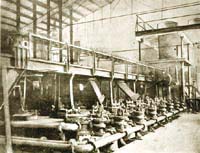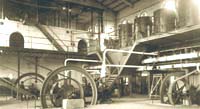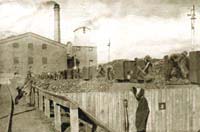|
By Eric Shackle
Queensland Cane Growers Should Switch to Sugar Beet“A sweet change is gradually entering the farms of Bathinda,” says a recent report in the Indian Express. “Farmers are commercially testing a crop they have previously known as not-a-very-popular ingredient at their dinner table – the sugar beet. “It is being raised by about 40 farmers, particularly in Jodhpur Romana in Bathinda district , for supply to a factory in Tarn Taran that extracts sugar from the sugar beet and not sugarcane. “The farmers say transportation cost of sugar beet is less than that of sugarcane. The return they get from sugar beet, 145 rupees a quintal [$2.52 US per 100 kilograms] is almost as much as they would get for sugarcane. The latest FRP for sugarcane was 170 rupees [$2.95 US] a quintal. “They can have possibly two beet crops a year and double their income because sugar beet is ready for harvest in six months compared to the 10 months the sugarcane would take. “The yield of sugar per quintal is also higher for sugar beet. Agriculture development officer Dr Baljit Singh said, ‘A quintal of sugar beet yields about 40 per cent sugar as compared to 15 – 17 per cent from sugarcane. Abroad, sugar beet is used for making sugar. In Punjab the first factory was set up only last year.’ “Dr Singh said, ‘In sandy areas of Bathinda, sugar beet farming succeeds because it needs less water. It is a good option to come out of the paddy-wheat cycle. All farmers have been given pick-up facilities by the mill, so they don’t have to bother about transport. We got this farm diversification done on trial after supplying seeds, and are hopeful that in the coming year, the area under sugar beet will increase.’” Hundreds of miles south of Queensland, Victorian farmers around Maffra in Gippsland have grown sugar beet for well over a century. The story of Maffra's sugar industry begins in the early 1890s. Although there had been other minor attempts to establish sugar production from beets in Victoria from as early as 1866, the local effort was by far the most serious. For a more detailed history of the Beet Industry in Maffra see The Beet Sugar Industry 1894 to 1948 which may be ordered from the Society. Author's Blog. |
Monday, July 1, 2013
Eric Shackle's Column
Subscribe to:
Post Comments (Atom)











No comments:
Post a Comment